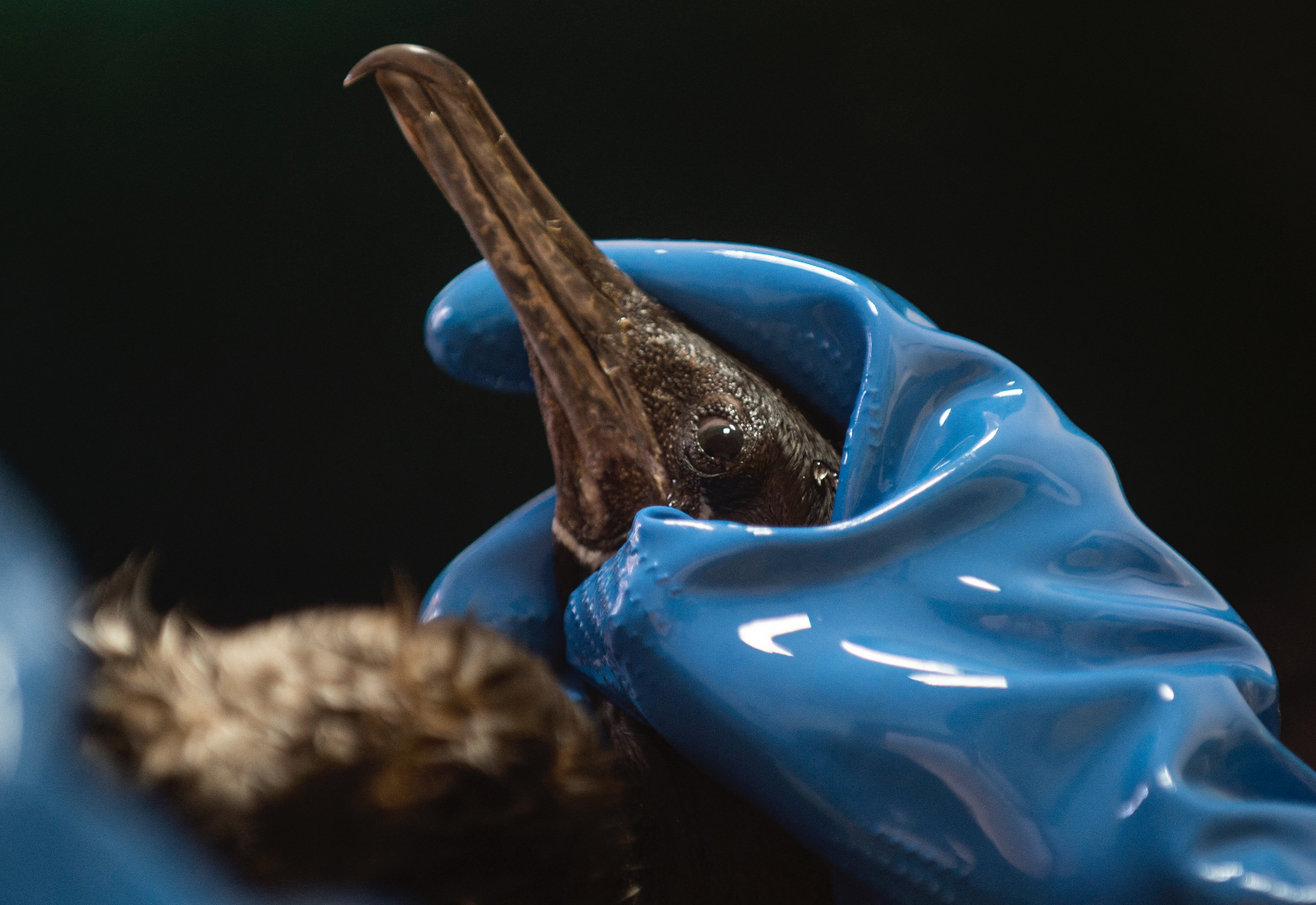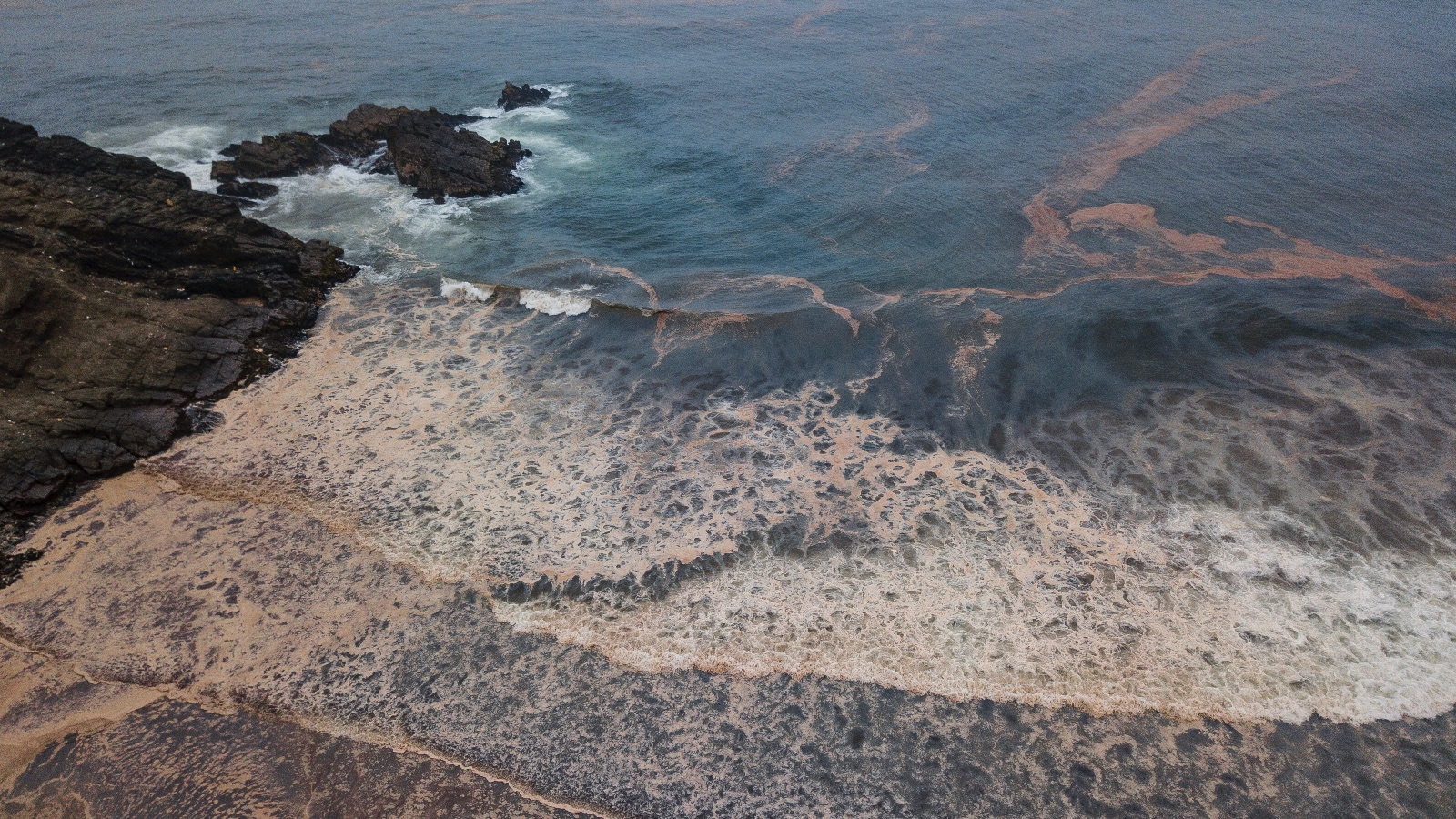Oil spills may be dramatic and devastating, but they’re not the biggest contributor to ocean oil pollution — not by a long shot.
A report released Wednesday gives that distinction to fossil fuel runoff from highways, parking lots, and other land-based infrastructure, mostly transportation related. According to the report from the National Academies of Sciences, Engineering, and Medicine, “Oil in the Sea,” these sources are by far the largest and fastest-growing contributor to ocean oil pollution. At some 1.2 million metric tons per year — a very rough estimate, given large data gaps — the amount of oil that gets transferred from land to sea is at least an order of magnitude larger than the amount from any other source.
“When you look at this ‘consumption’ number, it overshadows all the others,” Victoria Broje, a principal emergency management specialist for Shell and one of the report’s authors, told reporters at a media event on Wednesday. The report was co-sponsored by the American Petroleum Institute, a fossil fuel industry trade group, in addition to federal agencies from the U.S. and Canada.
The report builds on decades of previous research from the National Academies — a federally chartered research organization — that highlights the growing risk of oil pollution in the world’s oceans. Since the previous edition of Oil in the Sea was published in 2002, the organization says land-based sources of ocean oil pollution have swelled up to 20 times larger — driven in part by population growth and increased motor vehicle use.
Greater use of petroleum-based fertilizer chemicals, deicing compounds, and trash laced with petroleum products like printer ink are also adding to ocean oil pollution, the National Academies said. (Plastics, which are made from fossil fuels, were not considered in the report although they are a major contributor to ocean pollution.) In most cases, the oil is transported by water — it mixes with stormwater drainage systems, streams, rivers, lakes, and groundwater reservoirs and ultimately gets carried to the sea. Once in the ocean, even low concentrations of oil can jeopardize marine ecosystems over time, impairing animals’ ability to move, breathe, grow, and eat. Higher exposure rates can cause “mass mortalities” across species.

The second-greatest contributor to ocean oil pollution, the National Academies said, is “natural seeps,” or places like faults in the seafloor where crude oil can bubble up out of offshore reservoirs without human influence. Researchers estimate these seeps to add some 100,000 tons of oil to the oceans each year — a vastly greater number than the estimated contribution from oil spills and other discharges from the fossil fuel industry. Setting aside the anomalous, albeit devastating, Deepwater Horizon oil spill — which in 2010 contaminated the Gulf of Mexico with more than 200 million gallons of oil — the National Academies says spills since 2010 have only contributed a relatively “minor” amount of oil pollution to the oceans.
Ed Levine, a former scientific support coordinator for the National Oceanic and Atmospheric Administration and vice chair of the committee that wrote the report, clarified that oil spills still pose considerable risks to marine ecosystems, since the oil they release is so much more concentrated than oil from land-based sources. “As with everything,” he told Grist, “dose and concentration is what will kill you or not.” He also highlighted the risks for future spillage from the nation’s extensive and aging fossil fuel infrastructure — especially in the face of more frequent, more intense natural disasters.
To stop ocean oil pollution from getting worse, Levine said policymakers should focus on reducing runoff from land-based sources like cars and roadways, in addition to shielding coastal fossil fuel infrastructure from hurricanes and sea-level rise. His broadest request, however, is that governments invest in more research — and not just after high-profile oil spills. He said he’s seen a “boom and bust” cycle in which research ramps up right after an event like the 1989 Exxon Valdez oil spill, only to peter out over time.
The National Academies has long been calling for more research, but with disappointing results. The group’s previous report laid out 17 ways that federal agencies could support better research to address unanswered questions about ocean oil pollution — including where it comes from, how it behaves in the environment, and what it does to people and ecosystems that are exposed to it. But the National Academies says only three of these recommendations have been met; the rest have been ignored or only “partially addressed.” No progress has been made on quantifying the amount of fuel that gets dumped from airplanes, for example, and agencies like the Environmental Protection Agency and the U.S. Geological Survey have failed to establish partnerships with state and local authorities to determine the extent of oil pollution in major rivers and harbors.
Levine said he could likely identify “hundreds” of additional areas where more research is needed, including on the human health impacts of ocean oil pollution. Although the National Academies has made significant progress since the 2002 report, he added, “we think we’re still just cutting the surface of what we can do.”



